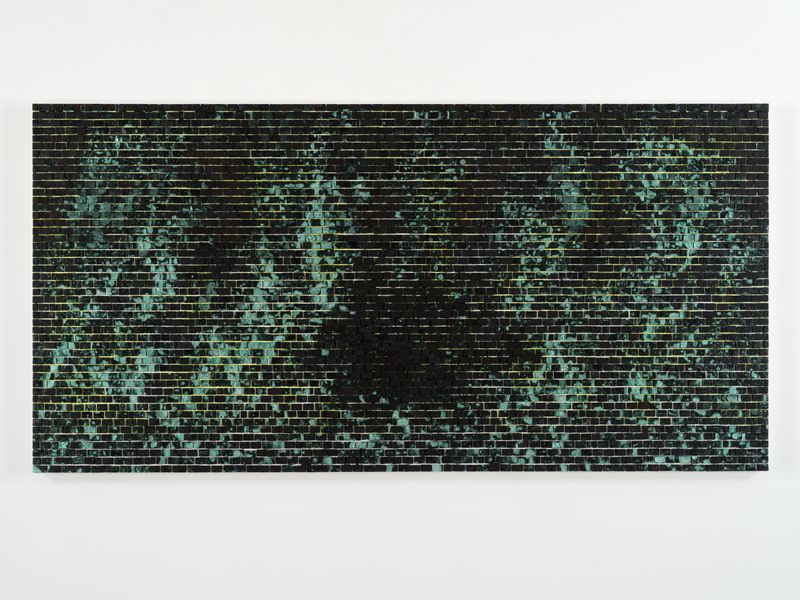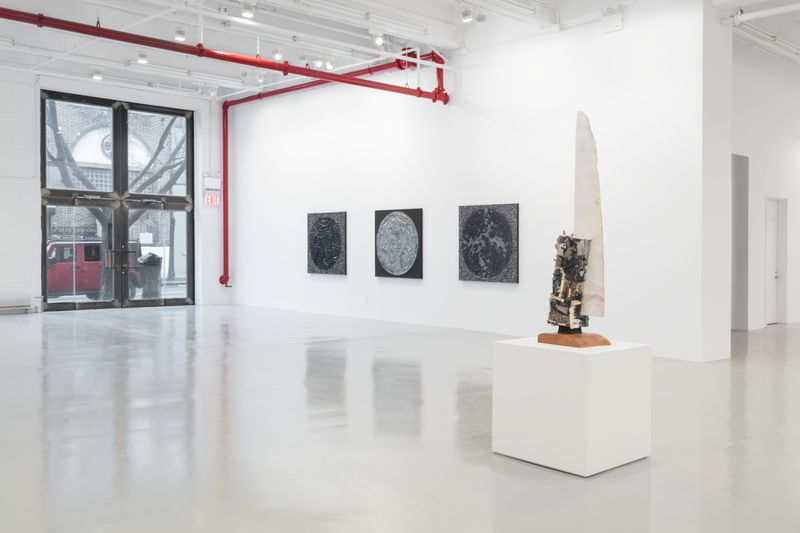Beginning 26 January 2017, Hauser & Wirth is pleased to present its first exhibition devoted to the work of American abstractionist Jack Whitten. The show will feature selections from the artist’s newest bodies of work from 2015 – 2017, including tessellated paintings from the series Quantum Walls, and Portals; a piece from Whitten’s ongoing Black Monolith project honoring African-American visionaries; and assorted lenticular works on evolon. Lushly material explorations of space and its apertures, these works celebrate the distinctive painterly language that Whitten has developed over the course of a five-decade career. ‘Jack Whitten’ will remain on view at Hauser & Wirth’s West 22nd Street space through 8 April 2017. Moving to New York City to study art at Cooper Union in the early 1960s, Whitten was exposed to a range of influences, from the vigorous paintings of fellow artists Willem de Kooning and Norman Lewis, to the rich complexity of bebop. Within this cultural milieu he developed an experimental style that combined the expressive physicality of gestural abstraction with the conceptual rigor of systems art. A radical breakthrough in 1970 provided the basis for his mode of working today: lifting a thick slab of acrylic paint off its support, Whitten realized that paint could be coaxed into the form of an independent object, challenging preexisting ideas about dimensionality in visual art. He began to lay sliced acrylic ribbons in wet, uneven fields of paint, mimicking the setting of mosaic tessarae into wet masonry. ‘For painting, that’s a new space,’ Whitten once said. ‘I first saw a glimpse of that space in the 70s, and I’ve been chasing it ever since. But now I’ve chased it up to a point where I can force it into a corner.’ It is no coincidence that the tessellated appearance of the new paintings on view at Hauser & Wirth calls to mind satellite imagery of topographies rendered in pixels and bits. Whitten, who nurtures a passion for astrophysics, views abstraction as an area in which he can probe space and time as both scientist and mystic. Works from the Portals series, begun in 2015 with ‘First Portal’, explicitly tempt the viewer into cosmological rabbit holes; their effects evoke planetary passageways as seen through a telescope. These works seductively imply partially veiled other worlds. ‘I practice thought experiments in abstract painting,’ Whitten has said of this series: ‘Thought experiments allow me to…travel anywhere I want without the encumbrance of matter.’ The Portals series led Whitten to his majestically-scaled Quantum Walls paintings, a series of five works begun in 2016, with the fifth completed in January 2017. Shimmering with brilliantly colored acrylic tiles, these works celebrate the beauty of the universe’s fundamental opposition to closure. ‘Quantum mechanics has rendered obsolete any notion of a wall,’ Whitten explained. ‘Quantum Walls is not to be misunderstood as a stand-in for utopia… I only want that which is possible.’ The exhibition introduces viewers to Whitten’s little-known sculptural practice with ‘Quantum Man (The Sixth Portal)’ (2016), a work that combines such disparate materials as marble, Cretan walnut, Serbian oak, lead, and acrylic, to startling effect. The sculpture’s human scale invites reflection upon how our bodies exist in space and, by extension, in relationship to other bodies, other souls. The exhibition forays into a celebration of humanity with the painting ‘Black Monolith X, Birth of Muhammad Ali’ (2016). This work is part of Whitten’s ongoing Black Monolith series, which memorializes important black artists, writers, thinkers, and poets. Whitten has said that this body of work uses abstract symbols to ‘honor our own and grieve our own,’ adding a very personal note: ‘The passing of Muhammad Ali was extremely painful for me. His raw, primal power channeled through the plasticity of boxing is something I seek in painting.’

















